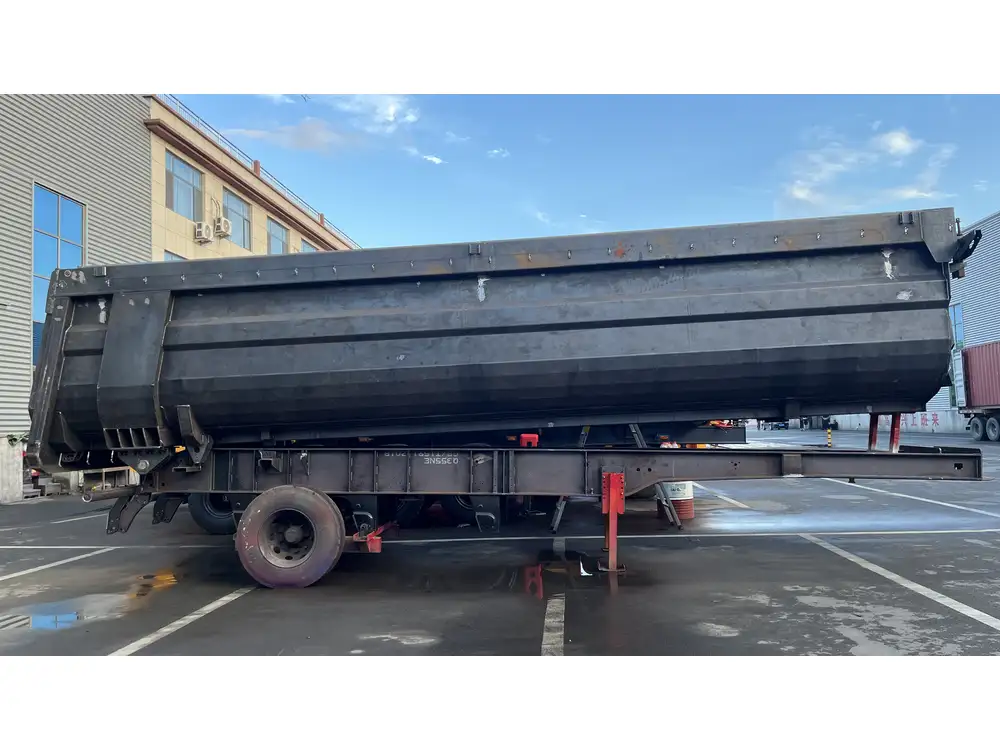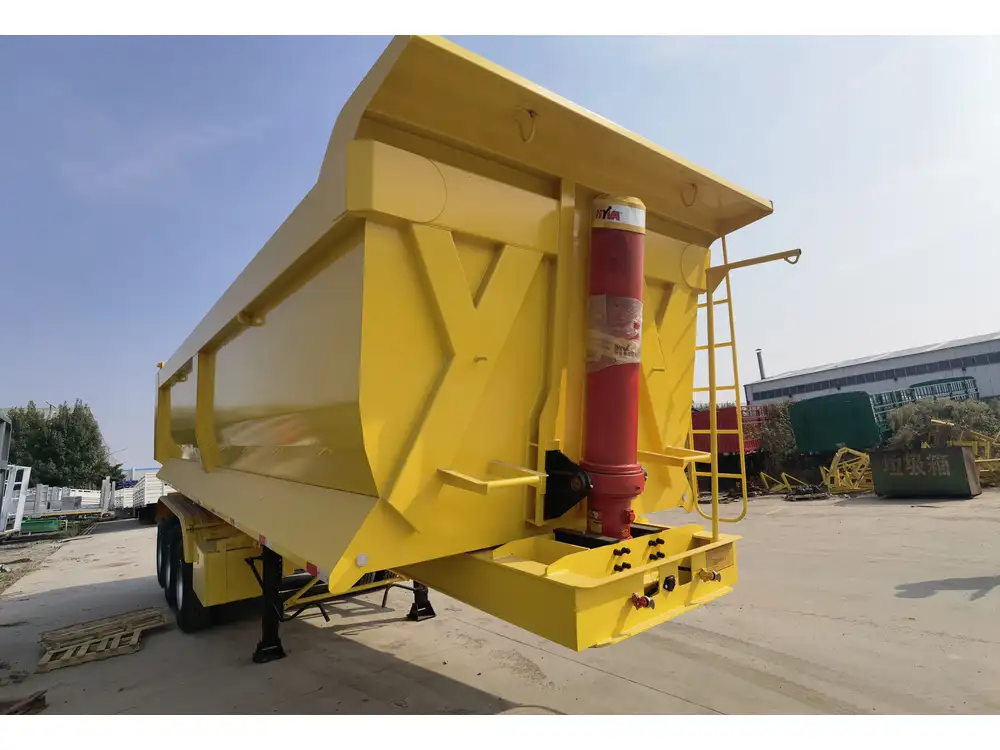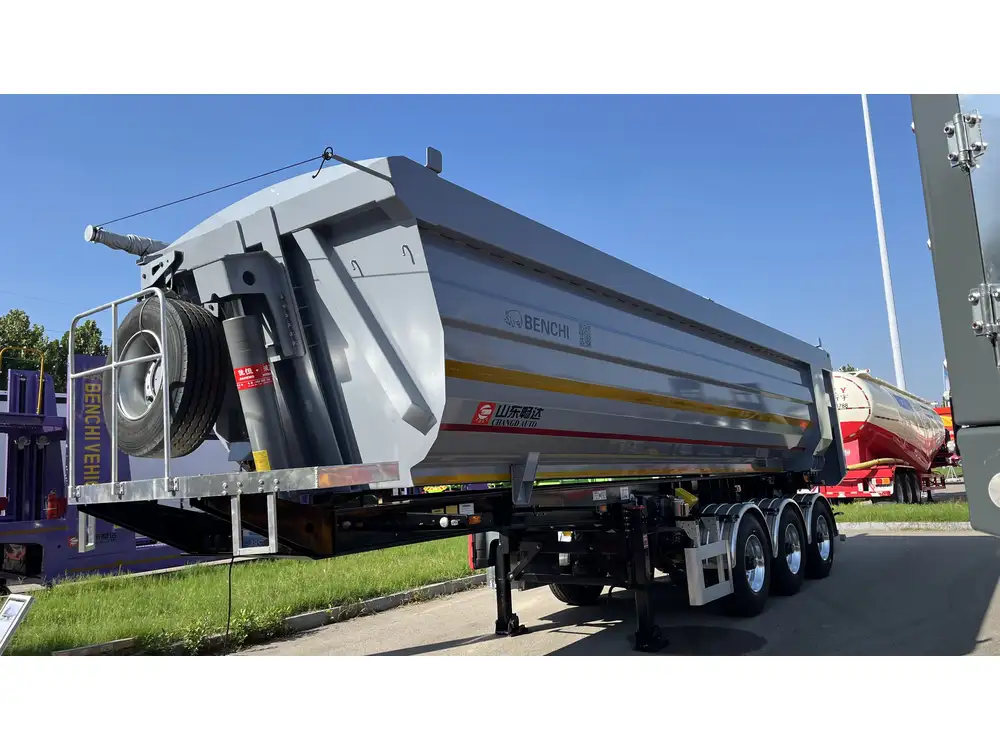In the high-stakes world of freight transportation, safety and efficiency are paramount. Among the critical components ensuring these pillars is the 4-Wheel Anti-lock Braking System (ABS) integrated into semi-trailers. At CarMax Vehicle, we understand the intricacies and importance of advanced braking systems in enhancing vehicle performance and driver safety. This comprehensive guide delves into the essentials of 4-Wheel ABS brake systems, their benefits, functionality, and how CarMax Trailer stands at the forefront of this technology.
The Crucial Role of ABS in Semi-Trailer Safety
Semi-trailers are substantial vehicles, often laden with heavy loads that demand robust and reliable braking mechanisms. The Anti-lock Braking System (ABS) plays a pivotal role in:
- Preventing Wheel Lock-Up: Ensures wheels maintain traction with the road surface during sudden braking.
- Enhancing Steering Control: Allows drivers to steer while braking, reducing the risk of skidding.
- Reducing Stopping Distances: Optimizes braking efficiency, crucial for heavy-duty vehicles.
- Minimizing Brake Wear: Distributes braking force evenly, extending the lifespan of brake components.
These factors collectively contribute to a safer driving experience, especially under challenging road conditions.
Understanding the Mechanics of 4-Wheel ABS Systems
A 4-Wheel ABS system is engineered to monitor and control the braking force applied to all four wheels of a semi-trailer. Here’s how it operates:

Core Components
| Component | Function |
|---|---|
| Wheel Speed Sensors | Monitor the rotational speed of each wheel in real-time. |
| Electronic Control Unit (ECU) | Analyzes data from sensors to determine the need for ABS intervention. |
| Valves | Regulate hydraulic pressure to individual brake lines. |
| Hydraulic Pump | Restores brake pressure when the system reduces it during ABS activation. |
Operational Steps
- Detection: Wheel speed sensors continuously assess wheel rotation.
- Analysis: The ECU processes sensor data to identify potential wheel lock-up.
- Intervention: If lock-up is imminent, the ECU signals the valves to modulate brake pressure.
- Adjustment: The hydraulic pump adjusts pressure to maintain optimal braking force without compromising steering.
This seamless interaction among components ensures that the ABS system responds swiftly to maintain vehicle stability.
Advantages of 4-Wheel ABS over Traditional Braking Systems
Implementing a 4-Wheel ABS system in semi-trailers offers numerous benefits over conventional braking methods:

Enhanced Safety
- Improved Traction Control: Maintains wheel grip, especially on slippery surfaces.
- Reduced Skidding Risks: Minimizes chances of losing control during emergency stops.
Operational Efficiency
- Consistent Braking Performance: Ensures reliable braking regardless of load variations.
- Shorter Stopping Distances: Facilitates quicker halts, critical in dense traffic scenarios.
Maintenance and Durability
- Even Brake Wear: Distributes braking force uniformly, reducing uneven degradation.
- Lower Maintenance Costs: Prolongs brake lifespan, decreasing frequency of replacements.

Driver Confidence
- Better Maneuverability: Empowers drivers to handle the vehicle confidently under various conditions.
- Reduced Fatigue: Less strenuous braking reduces driver fatigue over long hauls.
Key Components of a 4-Wheel ABS System in Semi-Trailers
A robust 4-Wheel ABS system comprises several intricate components, each serving a specific function to ensure optimal performance:
1. Wheel Speed Sensors
- Function: Detect the rotational speed of each wheel.
- Types: Magnetic or Hall effect sensors.
- Maintenance: Regular inspection for debris and wear to ensure accurate readings.

2. Electronic Control Unit (ECU)
- Function: Acts as the brain of the ABS, processing sensor data and controlling braking actions.
- Features: Advanced algorithms for precise modulation of brake pressure.
- Reliability: Engineered for durability under harsh operating conditions.
3. Valves and Hydraulic Lines
- Function: Adjust and control the flow of brake fluid to individual wheels.
- Design: Typically one valve per brake circuit, capable of rapid adjustments.
- Durability: Constructed from high-strength materials to withstand pressure fluctuations.
4. Hydraulic Pump
- Function: Restores brake pressure after ABS intervention.
- Capacity: Designed to handle the high demands of heavy semi-trailers.
- Efficiency: Energy-efficient models reduce overall system load.

5. Brake Actuators
- Function: Apply and release brakes based on signals from the ECU.
- Responsiveness: High-speed actuators ensure swift brake adjustments.
- Integration: Seamlessly works with other ABS components for synchronized braking.
Integration of 4-Wheel ABS in CarMax Vehicle’s Semi-Trailers
At CarMax Vehicle, our semi-trailers are outfitted with state-of-the-art 4-Wheel ABS systems meticulously integrated to enhance performance and safety.
Customized ABS Solutions
- Tailored Configurations: Designed to meet specific hauling requirements and vehicle specifications.
- Scalable Systems: Adaptable for various trailer sizes and load capacities.

Advanced Technology
- Smart Monitoring: Real-time diagnostics and alerts for proactive maintenance.
- Seamless Connectivity: Integration with onboard systems for comprehensive vehicle management.
Rigorous Testing
- Quality Assurance: Extensive testing under diverse conditions to ensure reliability.
- Compliance: Adheres to international safety standards and regulations.
User-Friendly Features
- Intuitive Controls: Simplified interfaces for easy monitoring and adjustments.
- Enhanced Feedback: Provides detailed information on braking performance and system status.

Maintenance Practices for 4-Wheel ABS Systems
Proper maintenance of the 4-Wheel ABS system is essential to sustain its efficacy and longevity. Here are best practices recommended by CarMax Vehicle:
Regular Inspections
- Routine Checks: Inspect wheel speed sensors, hydraulic lines, and brake components for signs of wear or damage.
- Component Testing: Ensure sensors and the ECU are functioning accurately through diagnostic tools.
Cleaning and Debris Removal
- Sensor Maintenance: Keep wheel speed sensors free from dirt, debris, and moisture to maintain precise readings.
- Brake System Cleaning: Regularly clean brake assemblies to prevent contamination and corrosion.

Fluid Management
- Brake Fluid Levels: Monitor and maintain appropriate brake fluid levels to ensure optimal hydraulic pressure.
- Fluid Quality: Replace brake fluid as per manufacturer recommendations to prevent system degradation.
Timely Replacements
- Worn Parts: Replace any worn or faulty components immediately to avoid system failures.
- Scheduled Servicing: Adhere to a maintenance schedule for comprehensive system checks and part replacements.
Professional Servicing
- Qualified Technicians: Engage certified professionals for maintenance and repairs to ensure system integrity.
- Manufacturer Guidelines: Follow CarMax Vehicle’s service manuals and guidelines for accurate maintenance procedures.

Comparative Analysis: CarMax’s 4-Wheel ABS vs. Competitors
When evaluating 4-Wheel ABS systems in the market, CarMax Vehicle’s offerings stand out due to several key differentiators:
| Feature | CarMax Vehicle | Competitors |
|---|---|---|
| Customization | High, tailored to specific needs | Limited standard configurations |
| Technological Integration | Advanced smart monitoring and connectivity | Basic functionality |
| Durability and Reliability | Engineered for extreme conditions | Varies, often less robust |
| Maintenance Support | Comprehensive support and service network | Limited or inconsistent support |
| Compliance and Standards | Meets and exceeds international safety norms | Dependent on manufacturer |
| Cost-Effectiveness | Competitive pricing with high value | Often more expensive with similar features |
Superior Customization
CarMax Vehicle offers highly customizable ABS solutions, ensuring that each semi-trailer is equipped to handle its unique operational demands. This level of customization is not typically available with generic ABS systems provided by competitors.
Advanced Technological Integration
Our ABS systems incorporate cutting-edge technology, including real-time diagnostics and seamless connectivity with onboard management systems. This integration facilitates proactive maintenance and enhanced vehicle performance, setting CarMax apart from competitors who offer more basic ABS functionalities.

Exceptional Durability and Reliability
Designed to withstand the rigors of long-haul transportation, CarMax’s 4-Wheel ABS systems are built with premium materials and rigorous engineering standards. This results in unparalleled durability and reliability, minimizing downtime and maintenance costs compared to less robust competitor systems.
Future Trends in ABS Technology for Semi-Trailers
The evolution of ABS technology continues to drive advancements in semi-trailer safety and performance. Anticipated trends include:
Integration with Autonomous Systems
- Enhanced Automation: ABS systems integrated with autonomous driving technologies for improved decision-making during braking.
- Predictive Braking: Utilizing AI to predict and respond to braking needs based on traffic patterns and road conditions.

Enhanced Connectivity
- IoT Integration: Real-time data sharing and system monitoring through the Internet of Things (IoT) for proactive maintenance and performance optimization.
- Telematics Integration: Seamless communication with fleet management systems for comprehensive vehicle oversight.
Advanced Sensor Technologies
- Higher Precision Sensors: Improved wheel speed sensors offering greater accuracy and faster response times.
- Multi-Modal Sensing: Combining multiple sensor types for a more holistic assessment of vehicle dynamics and braking needs.
Sustainable and Efficient Systems
- Energy-Efficient Components: Development of ABS components that consume less power without compromising performance.
- Eco-Friendly Fluids: Introduction of environmentally friendly brake fluids to reduce the environmental impact of ABS systems.

Enhanced User Interfaces
- Augmented Reality Displays: Providing drivers with intuitive, real-time feedback on ABS performance through augmented reality dashboards.
- AI-Powered Assistance: Offering intelligent assistance and recommendations based on ABS system data and driving patterns.
These advancements promise to further elevate the safety, efficiency, and reliability of semi-trailer ABS systems, aligning with the growing demands of the transportation industry.
Conclusion
The 4-Wheel ABS brake system is an indispensable component in the realm of semi-trailers, significantly enhancing safety, performance, and reliability. At CarMax Vehicle, we are committed to advancing this essential technology, offering highly customizable and technologically integrated ABS solutions that set new standards in the industry. By understanding the mechanics, benefits, and maintenance of 4-Wheel ABS systems, fleet operators and drivers can make informed decisions that lead to safer and more efficient transportation operations.
Frequently Asked Questions

1. How does a 4-Wheel ABS system differ from a 2-Wheel ABS system?
A 4-Wheel ABS system monitors and controls braking on all four wheels of a semi-trailer, providing comprehensive control and stability. In contrast, a 2-Wheel ABS typically only manages braking on the front wheels, offering limited control and less effective prevention of wheel lock-up on the rear wheels.
2. Can I retrofit an existing semi-trailer with a CarMax 4-Wheel ABS system?
Yes, CarMax Vehicle offers retrofit solutions for existing semi-trailers. Our team works closely with clients to assess compatibility and ensure a seamless integration of the ABS system with the vehicle’s existing infrastructure.
3. What maintenance is required to keep the 4-Wheel ABS system functioning optimally?
Regular maintenance includes routine inspections of wheel speed sensors, cleaning brake components, monitoring brake fluid levels and quality, and timely replacement of worn parts. Adhering to CarMax’s recommended maintenance schedule ensures the ABS system remains reliable and efficient.

4. How does the ABS system improve fuel efficiency in semi-trailers?
While the primary function of ABS is to enhance safety, efficient braking reduces unnecessary brake wear and optimizes fuel consumption by maintaining consistent braking performance. Additionally, smoother braking patterns can contribute to overall fuel efficiency.
5. Are CarMax’s 4-Wheel ABS systems compatible with all types of semi-trailers?
CarMax Vehicle designs its ABS systems to be highly adaptable, ensuring compatibility with a wide range of semi-trailer types and configurations. Our experts can customize the system to meet specific vehicle requirements, ensuring seamless integration and optimal performance.



